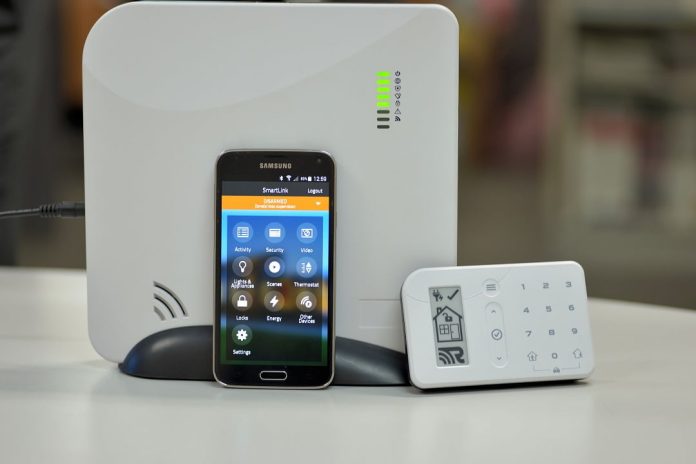What were the most influential products and technologies of 2015? It’s always difficult to find a balance between the solutions that catch the market’s momentary attention and those solutions that will go on to have a serious impact on the way we conduct our business.
KEY products and technologies in 2015 included mobile app management of security and automation solutions, improvements in CCTV camera technology – particularly increased resolution, reduced bitrates and larger sensor sizes – and the ongoing process of developing management solutions that allow single-workstation management of multiple subsystems, locally and globally. Other trends include falling costs, the elevation of risk for law enforcement agencies and other government departments, as well as in public spaces.
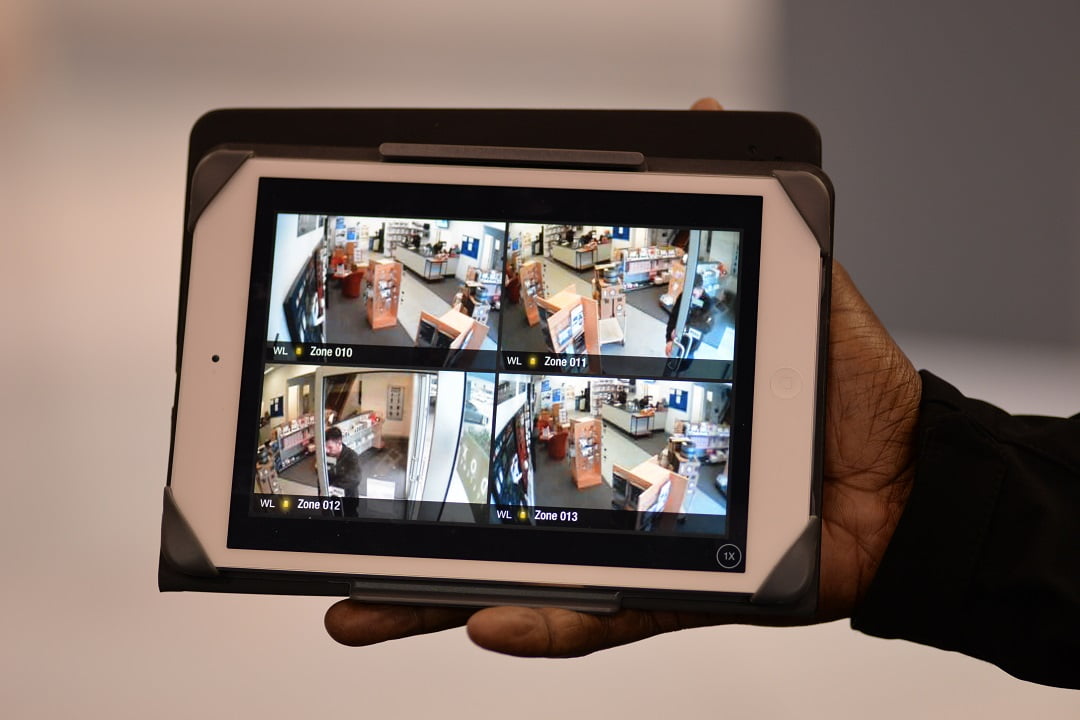
CSD's Paradox Insight
Managing systems using mobile applications or remote browsers is a trend that has been building for some time and while it’s not yet come to a head, the impact of this new way users prefer to interface with security systems is going to be pivotal in terms of the underlying nature of the systems themselves. Combined with the ongoing swing towards Australia’s national broadband network, the trend may shift or blur the nature of revenue streams – not so much with larger security solutions but with residential and small commercial systems. This relates to cloud but there are also plenty of browser-based solutions out there combining remote management with the security of proprietary VPNs.
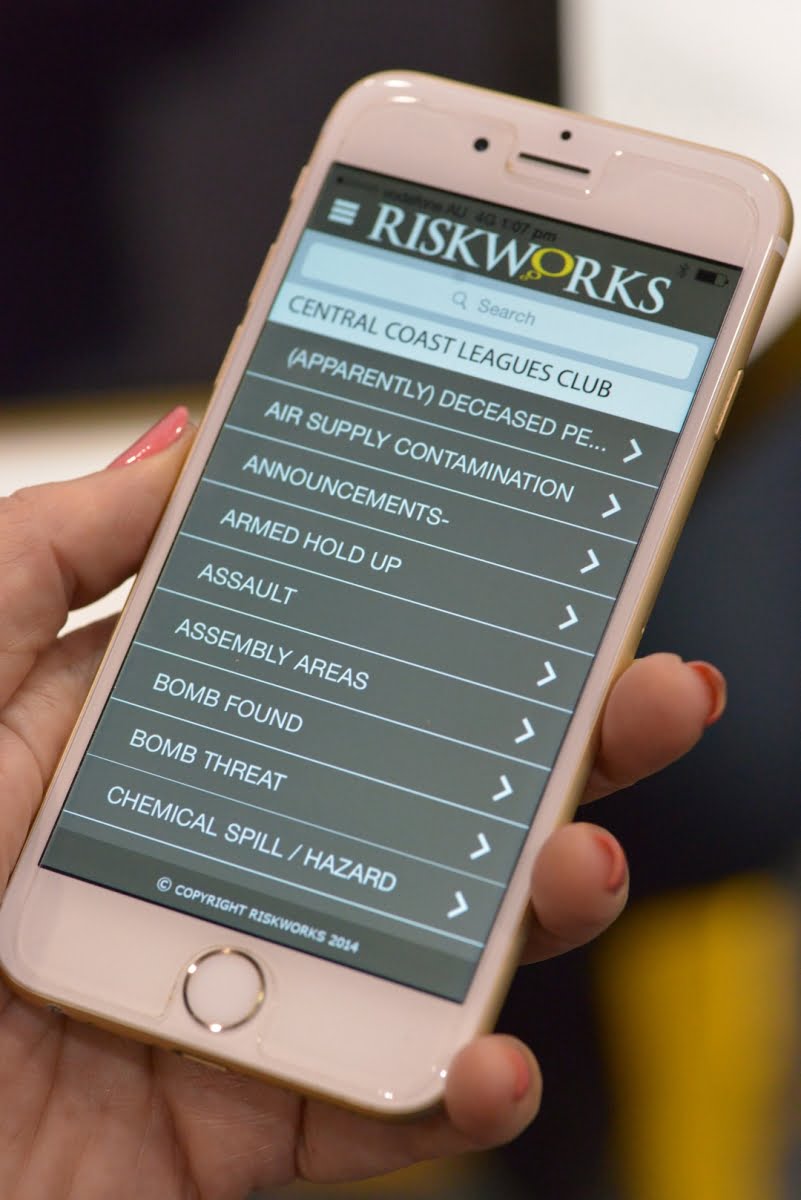
Particularly awesome cloud-based response procedures app from RiskWorks.
When it comes to changes in security system management, it’s not just in the electronic security industry we should be looking at. Cloud services at the corporate level are beginning to make inroads into traditional networking models and it’s certain we’ll see greater adoption in the future. Something that’s noticeable too, is the fact that services like Microsoft Office 365, Apple, Google, Amazon represent a change in the way networking is being done by everyone.
True, at the moment, cloud services are in their infancy and not every organisation has developed a cloud strategy but this is an area that bears a close watch. To my mind, the fall in hardware costs, the idea of security solutions as a service, the broadband enhancements offered by 4G, by the NBN, by more advanced symmetrical network links and widespread Wi-Fi, the fall in the cost of high quality network area storage devices, the way core systems are being developed that funnel users into networked environments – all these things shape the networking ecosystem of the future. These changes collectively facilitate a different level of functionality and a different level of interaction for all users – whether home owners or the managers of smart cities. They also introduce new levels of risk.
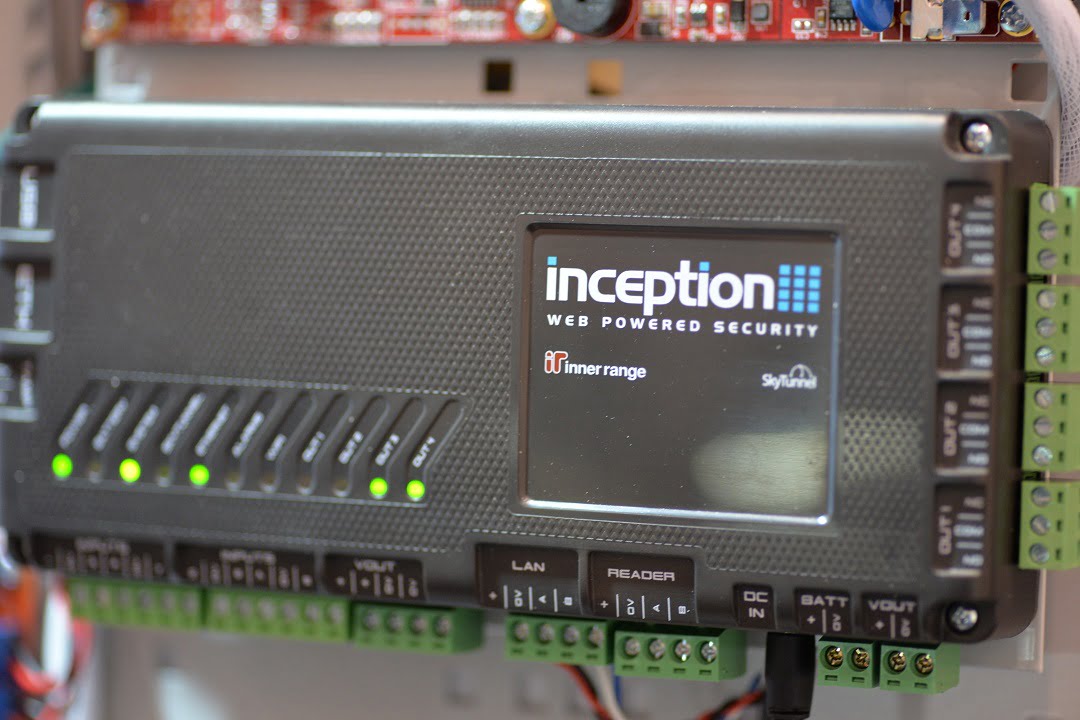
Browser access of your system with Inner Range Inception
It’s not easy for security people – end users or integrators – to know how to respond to changes of the underlying network stratum. But strategies are needed. We are on the fringes of a paradigm shift that offers opportunities and presents threats at multiple levels. Electronic security cries out for an increase in user access to key aspects of vital data, yet a less certain world highlights the need to keep security networks closed tight. How this dichotomy of threat and remote management will play out is not yet certain.
Domestic and SME integration
When it comes to residential and commercial products in the remote management space, it’s hard to narrow it down. DSC and 2GIG use Alarm.com’s app, there’s Ness Mezzo with the Ness app and new Nessosphere cloud. CSD’s Paradox panels are app-supported, RISCO is arguably the market leader in this space. There’s new product coming from Inner Range in access control and alarms. There’s a Tecom app, there’s a new Gallagher app, Security Merchants has a Yale app.
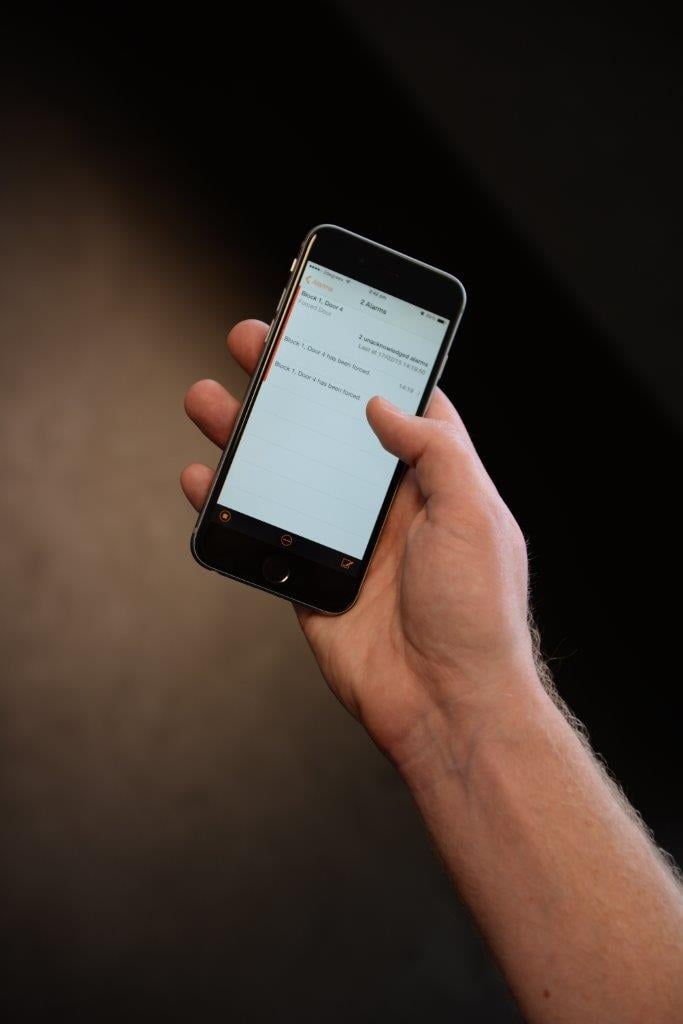
Gallagher's new app makes managing enterprise solutions easier.
Gallagher’s mobile client is part of Command Centre v7.30. Using an Apple iPhone running iOS8, users can monitor and acknowledge alarms; and check and override door and zone status remotely. With security management on the move, Gallagher’s mobile client enables security personnel and small business owners the flexibility to travel around or off-site, with after-hours visibility to protect their property anytime, anywhere. The idea, according to Gallagher, is to give users useful access to existing data in order to assist the management of business and security trends.
Meanwhile, Tecom Mobile works on iOS and Android devices and connects directly to any IP-enabled Challenger10 series of panels. Users can control and view the status of Challenger devices via the intuitive interface, allowing you to open doors, arm/disarm areas, isolate inputs or control lighting. Users can quickly view and reset outstanding alarms with events displayed from the panel in a friendly, easy to read format. It’s possible to program PIN codes or access control cards via the Tecom Mobile app and also edit other user details including access groups and expiry dates.
Honeywell too, has a large and expanding ecosystem that covers its entire range, from domestic alarms to enterprise management. Things are as comprehensive on the CCTV side, with multiple systems and cameras coming with the capability to integrate with mobile devices. I’m repeating myself, but the biggest thing here is not remote access of system function but the potential change it heralds a little way down the track. Security electronics as a service – that’s what we’re leaning towards.
Alarm systems are also looking different. Ness Mezzo is a smart home controller that combines spread spectrum wireless, Z-wave and IP technologies to handle multiple security and automation, energy management, intercom, CCTV and medical alarms and reporting into one battery-backed wireless control unit. The system has massive expansion. It will support 128 Ness 2-way wireless security devices, 247 Z-Wave devices from any Z-Wave manufacturer, as well as 8 Ness vuHoo cameras and one Ness uHoo intercom. The system is managed by MEZZO App via a dedicated WiFi router with a backup 3G path. Meanwhile, spread spectrum gives a secure 2-way radio protocol between the MEZZO hub and wireless security devices.
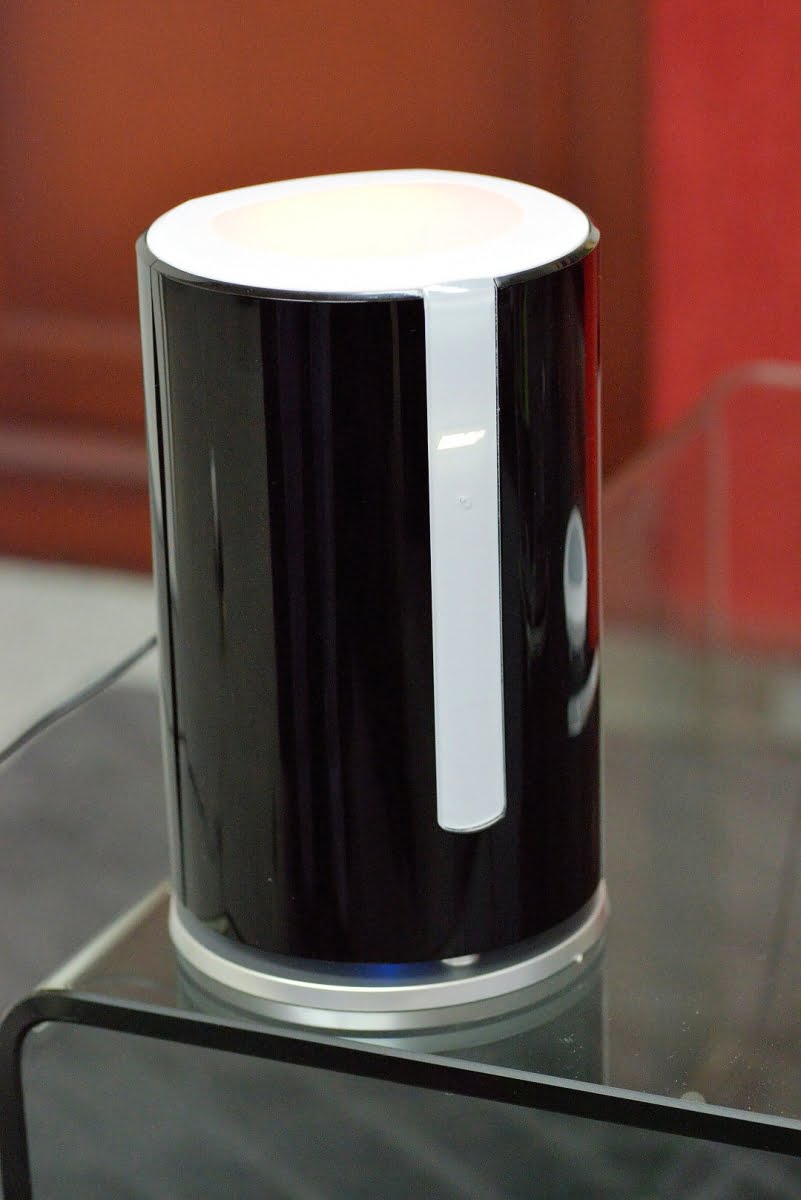
Unlike some other solutions, there’s no web browser in MEZZO. Instead, the app does everything and communicates directly with the controller via local Wi-Fi. Meanwhile, Inner Range’s SkyGuard is a Z-wave security and automation panel that Inner Range is developing in conjunction with an overseas partner. Physically, SkyGuard looks like a networking device – a standard domestic vertical router fronted by a neat LCD keypad and an app. SkyGuard is expandable to 96 433MHz alarm inputs and 8 Z-Wave automation devices, as well as a Bluetooth keypad. Along with a 3G module option, the panel also has an integrated Ethernet port.
A new player from Security Merchants is Yale's Professional Series Alarm, which features 2km RF range coupled with integrated IP, 3G and GPRS reporting. The integrated transceiver supports up to 40 devices from a range of Zigbee and RF-433/F1 devices including, locks, temperature sensors, power relays and outdoor PIRs.
Another example of the security and home automation trend is 2GIG Go!Control from QSS, which offers 48 security zones, as well as the potential for 232 Z-wave devices. That big Z-wave capacity means the system expands considerably, should you want it to. Go!Control can be used with Alarm.com but it’s also perfectly capable of being used in a more traditional way and linking to monitoring station receivers via PSTN/POTS or 3G linked.
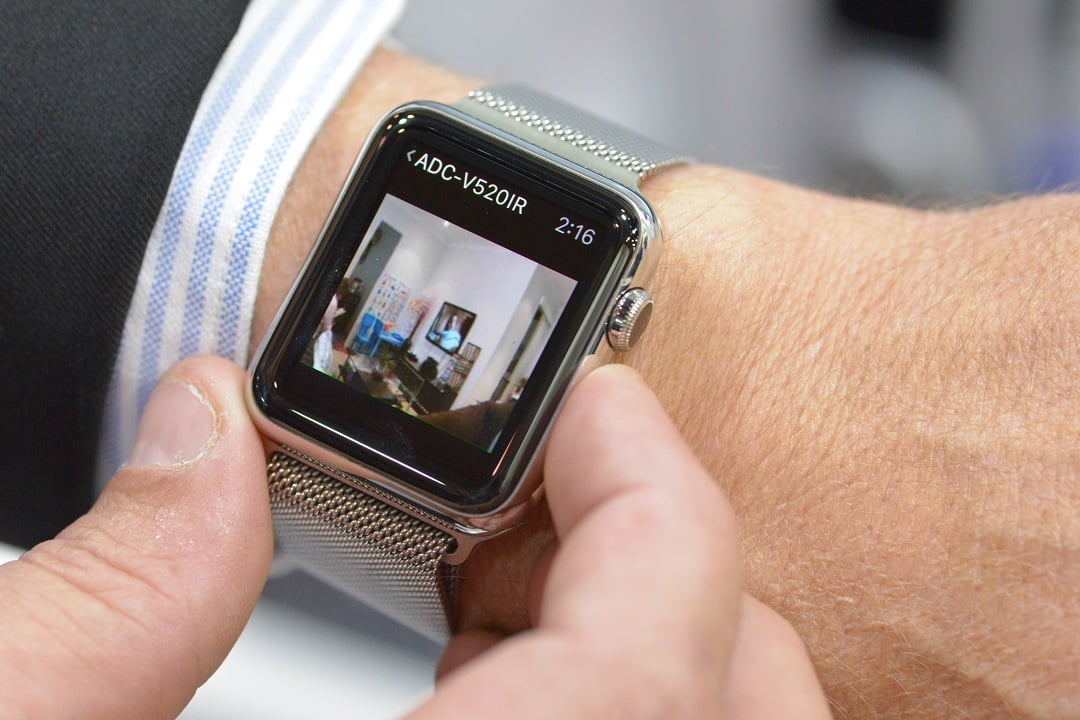
DSC NEO and Alarm.com on your wrist…
Interlogix ZeroWire system supports up to 64 zones and can accept more than 250 users. It has context-sensitive keys and voice-guided menu for simple installation and operation and supports door/window, glass break and environmental sensors; motion, smoke and carbon monoxide detectors. The system can also handle up to 20 key fobs that can be used locally for arming/disarming the panel, turning on or off a Z-Wave-enabled light, or activating the panic feature from a compact, remote device.
There’s a dual-path reporting over broadband and cellular networks for increased levels of security. Something that’s interesting is the fact Interlogix is highlighting the fact ZeroWire’s teeny footprint and low-profile allow it to be wall-mounted or table-mounted.
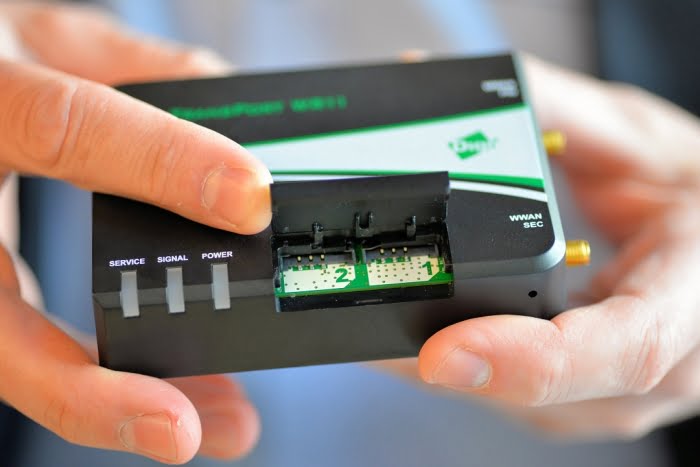
DirectConnect from SCSI
In the monitoring space this year we have SCSI DirectConnect, a secure and reliable 4G Fixed-IP service that connects CCTV, access control, BMS, medical alert, in fact any IP device, via SCSI’s VPN and makes it available for remote access. DirectConnect is deployed through a standard 4G router that connects to SCSI’s private and secure network from any location with 4G wireless coverage.
Fulfilling another role is Inner Range’s T4000 Lite, which is compatible with most alarm panels and simply connects to the panel via its telephone port, eliminating the need for a dedicated alarm panel phone line connection to the street. T4000 Lite handles all alarm communications via its fast 3G dual-SIM and 10/100Mbps Ethernet-polled communications paths.
Security and automation providers are bringing management and event notifications to domestic and small commercial end users in event histories collated in apps on mobile devices but at the same time, large end users are investing in integrated solutions that combine video surveillance, access control and intrusion detection with multiple sub systems on single workstations.
Integration is a change that’s being reached for in hundreds of different ways. Access control is a case in point. There are software drivers for hundreds of CCTV systems being incorporated into access control solutions. There are changes in user interfaces. There are also layers of networking capability. There’s Inner Range’s Inception solution, which gives installers and end users remote access via browser. There’s Paxton Net2 plus, which is IP-based with door controllers, alarm inputs, intercoms and cameras managed over a global network – this solution covers a lot of bases thanks to relentless expandability. At the same time, CEM Systems, Inner Range and Gallagher offer powerful enterprise access control solutions with layers of networking capability and profound functionality that incorporates the ability to integrate with multiple sub-systems.
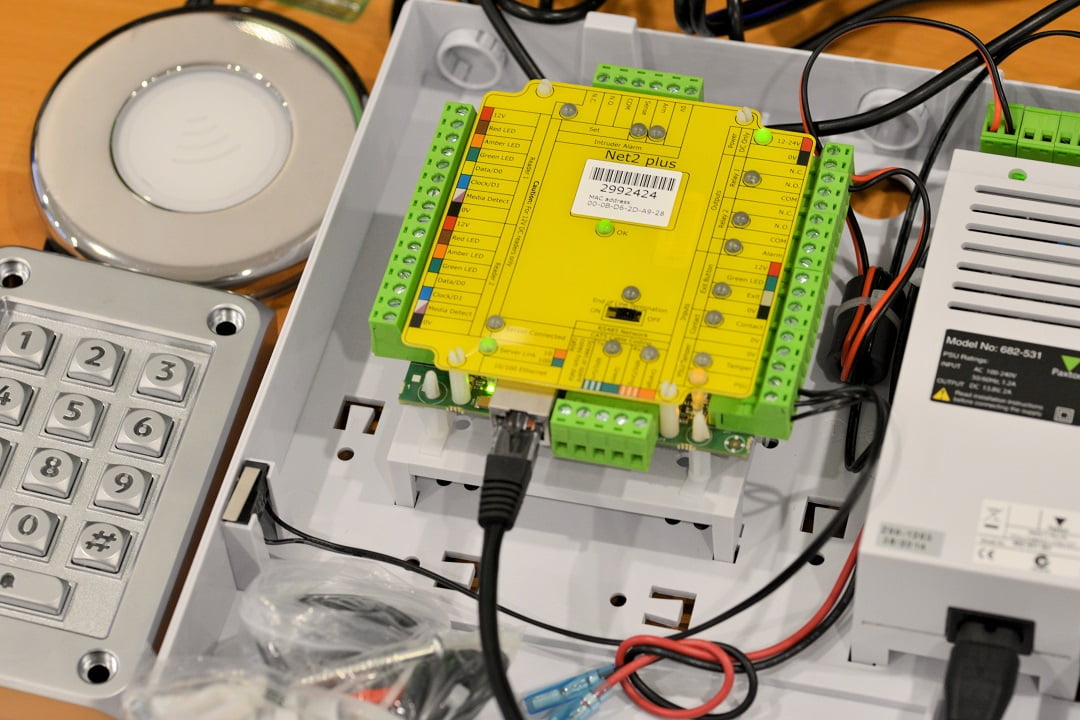
When it comes to CCTV, along with access control, intrusion detection and support for multiple subsystems, we are seeing the ongoing evolution of holistic management solutions from quality software developers like Geutebruck's G-SIM, Genetec, Exacq Technologies, AxxonSoft, DVTEL, Milestone, and locally, Camvex. We are seeing integration within monitoring platforms, integrations of CCTV and intrusion detection into intercom devices, we see it in alarm systems that incorporate Z-Wave everything, we see it in cloud-based access management of remote door controllers.

Integrated drone from Genetec – very cool and tons of situational awareness for public surveillance.
Meanwhile, surveys show end users think security is the heart of their home automation solutions – security sensor input and CCTV camera input data is central to the integrated nature of the future. Not just for security but for process control, for retail marketing, for smart cities, for remote access events. At every level, the expectation of what is possible is changing. There is no chance anyone is going to want to go back to the old days when they communicated with their electronic security system by looking at LED lights on a local keypad.
Camera technology
CCTV camera technology keeps improving and the quality manufacturers are closer than ever in terms of performance and price. Given video surveillance is becoming central to so many integrated systems and is vital not just to first response teams but to investigators and for video verification of alarm events, improvements in resolution and bitrate from 4K camera technologies were one of the major trends of 2015. We are seeing 4K from Dahua, Hikvision, Sony, Samsung, Panasonic, Uniview, Bosch, DVTel and others.
Of these, Panasonic’s new WV-SF781L dome camera and WV-SPV781L 4K box cameras can effectively cover a field of view 4 times larger than 1080p cameras and a view 9 times larger than 720p cameras. They can also cover 2 and 3 times the distance of 1080p and 720p cameras respectively.
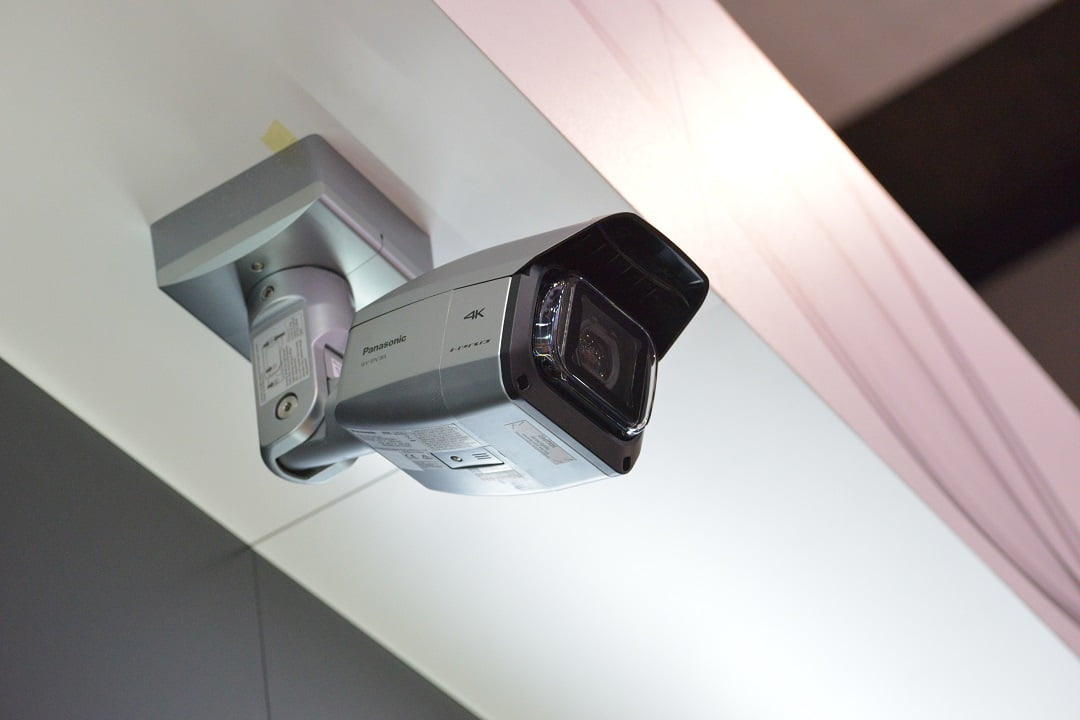
And the thing is, 4K really does make a difference, especially in external scenes. It’s a technology that empowers camera inputs, empowers operators and empowers police investigations and prosecutions. There’s an efficiency in 4K as well. Fewer cameras, better coverage. Low light performance is the trick and the trend to larger BSI sensors and could be what’s needed to lift pixel and pixel lens diameters to the size needed for stronger low light performance.
Another interesting development is the Avigilon HD Multisensor camera, distributed locally by CSD. Designed with 3 or 4 individually configurable 3MP camera heads, HD Multisensor cameras enable users to easily monitor environments in high resolution image quality with multiple viewpoints from a single imaging platform. The camera allows complete coverage of wide areas with the simultaneous ability to digitally zoom in on any movement that occurs within the field-of-view.
Higher resolution and more camera heads means more bandwidth. In CCTV, bitrate is a key area of importance and improvements in compression and camera design are conspiring to reduce bandwidth and storage demand, while retaining resolution where it’s needed. This year we saw ZipStream from Axis and SMART H.264+ from Hikvision and there are also H.265 developments from a range of manufacturers, including Vivotek and Samsung.
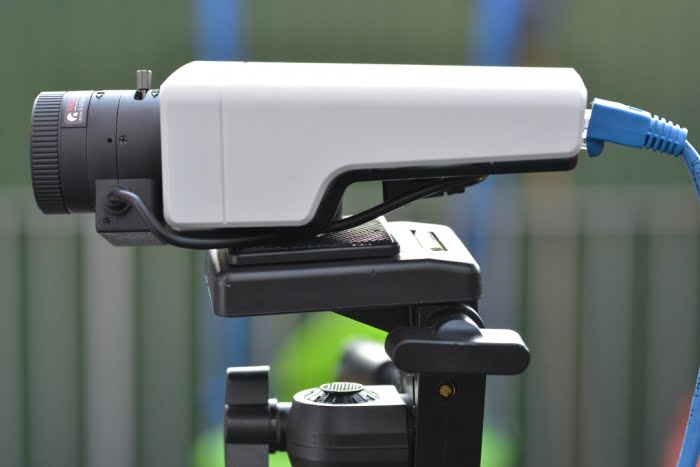
Axis bought Zipstream to its economy range in 2015 and its performance was mind blowing.
Axis’ Zipstream technology analyzes and optimizes the network camera’s video stream in real time. Scenes containing interesting details are recorded in full image quality and resolution while other areas are filtered out, to optimally use available bandwidth and storage. Important forensic details like faces, tattoos or license plates are isolated and preserved, while irrelevant areas such as white walls, lawns and vegetation are sacrificed by smoothing in order to achieve the better storage savings. We tested it and loved it.
Meanwhile, Hikvision’s proprietary smart codec H.264+, reduces bandwidth and storage requirements by 50 per cent compared with standard H.264 systems. The H.264+ smart codec combines features like background-based predictive smart encoding, enhanced noise suppression, advanced video content analysis and optimized bitrate control for long-term periods in order to save bandwidth resources and reduce storage requirements. These sorts of technologies are vital if CCTV systems are attain levels of resolution that allow court admissible face recognition out to say, 20m from the lens, using relatively wide angles of view. The beauty of 4K is both situational awareness and digital zoom that really works. In good light – above 15 lux – 4K is brilliant.
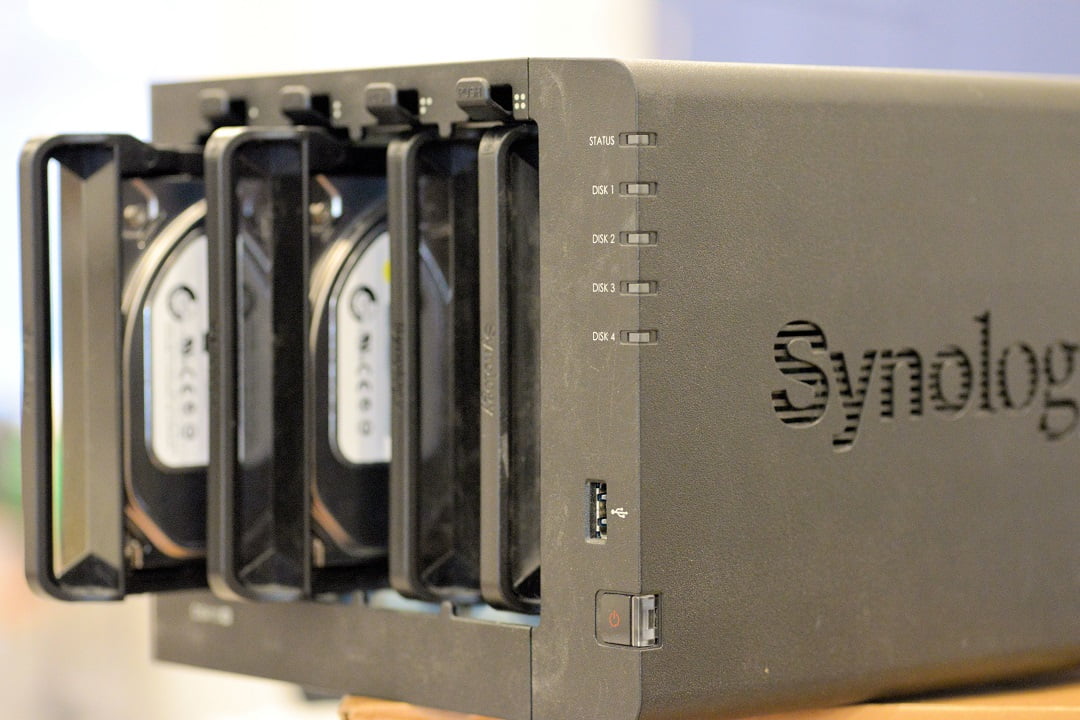
Encapsulating the meeting point of electronic security, networking, storage and cloud are products like Synology Surveillance Station 7.0, which work with Synology NAS systems to give users control of any camera installed on their network, with the option of full cloud support for alarm events, as well as for CCTV and access control integration. Surveillance Station 7.0 has a panel that lets users easily review, play back, or save suspicious events. There’s automated event-linking for dynamic surveillance environments and to facilitate task automation. When paired with the AXIS Network Door Controller solution, surveillance personnel can monitor, lock and unlock, or view access logs of connected doors — all from the familiar Surveillance Station interface.
Leading into 2016, it’s likely the trends we’ve seen in 2015 will continue. Integration is only going to become more pervasive and expect to hear more about securing remote management paths. The devaluation of the Chinese yuan will put downward pressure on prices, the hunger from law enforcement agencies for high resolution footage will drive system upgrades and expansions. Consumers are now being hit with 4K OLED TV monitors – 3840 x 2160 pixels – these are going to increase the appetite for high resolution video.
In 2015 we saw the acceleration of a downward specification creep, which saw high specifications appearing in lower priced products relatively soon after they’d been released in higher end gear. We’ll see more of this as manufacturers scrap for market share. Generally speaking, most CCTV cameras offer good performance and some are excellent, balancing low light and WDR requirements with ever more serious aplomb. Offering balanced performance at higher resolutions is going to be the key for the market leaders of the future.
Changing Global Threat Levels
Something we can’t get away from in 2015 is a changing threat level highlighted by events at home and overseas, which sees local police stations and other government organisations and their staff, as well as public spaces and entertainment venues at real risk of terror attack. There’s a visible trend for the hardening of these targets, physically and with electronic security solutions and this seems to be taking place in every state. There are times when it feels Australia is a long way from such troubles but the need for vigilance and the duty of care is a real one.
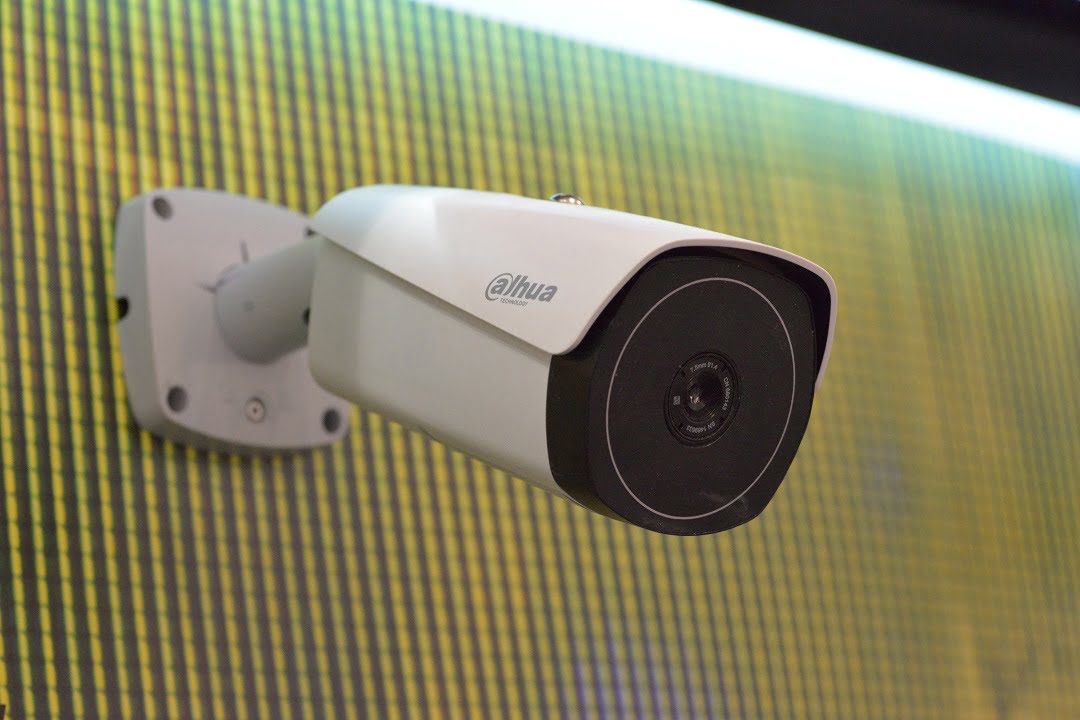
Another key trend in 2015 was an increase in spending on public surveillance systems, which seem to have reached a tipping point in terms of their acceptance by the general public. This expansion of public surveillance applies to IP upgrades, as well as to greenfield solutions. Locally, these systems vary in size and complexity from a few dozen, to hundreds of cameras, generally managed in partnerships between councils and police. The types of systems being installed are relatively varied. Some are larger server-based solutions, while others make do with NVRs. We will see more public surveillance in 2016.
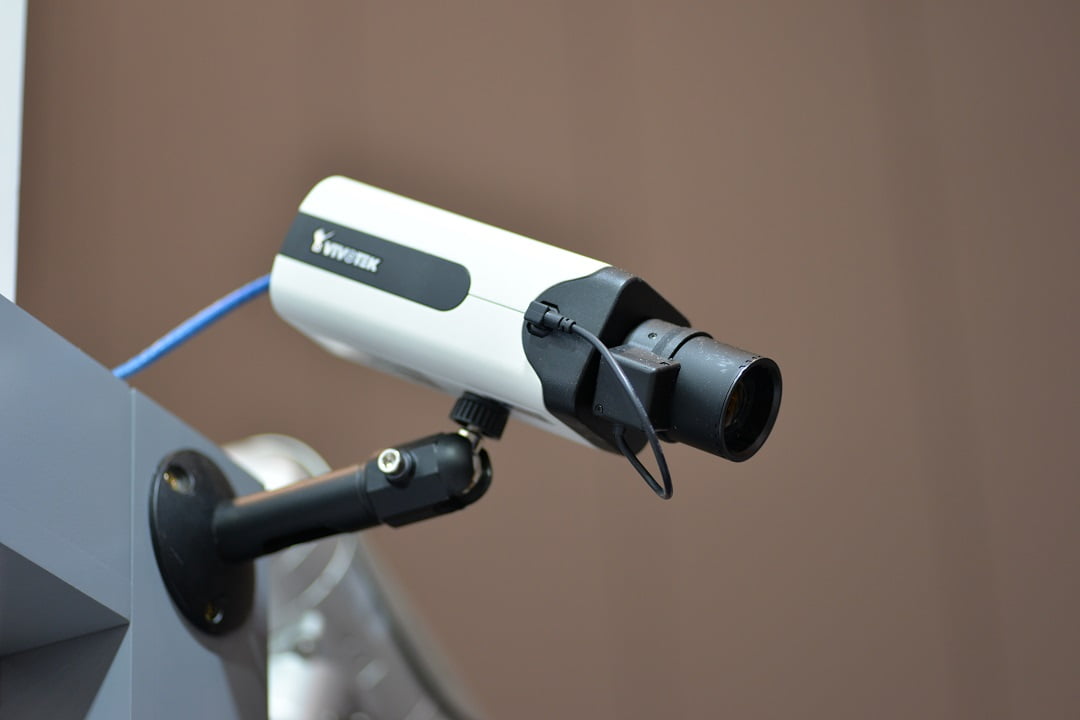
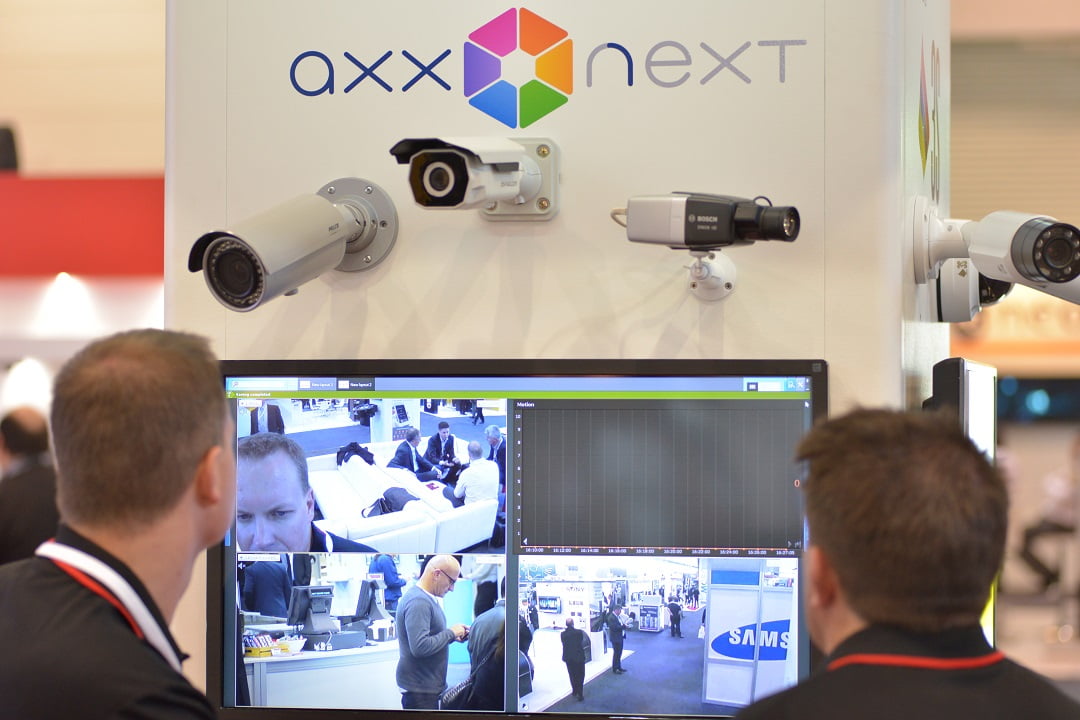
The world we live in has changed and the recent past appears rather like that golden Bank Holiday weekend in 1914. We may never rediscover entirely peaceful days. In the meantime, electronic security systems are the thin edge of the wedge when it comes to muscular access management, real time surveillance of developing events, emergency response, investigations and convictions, make no mistake about that.♦
By John Adams



